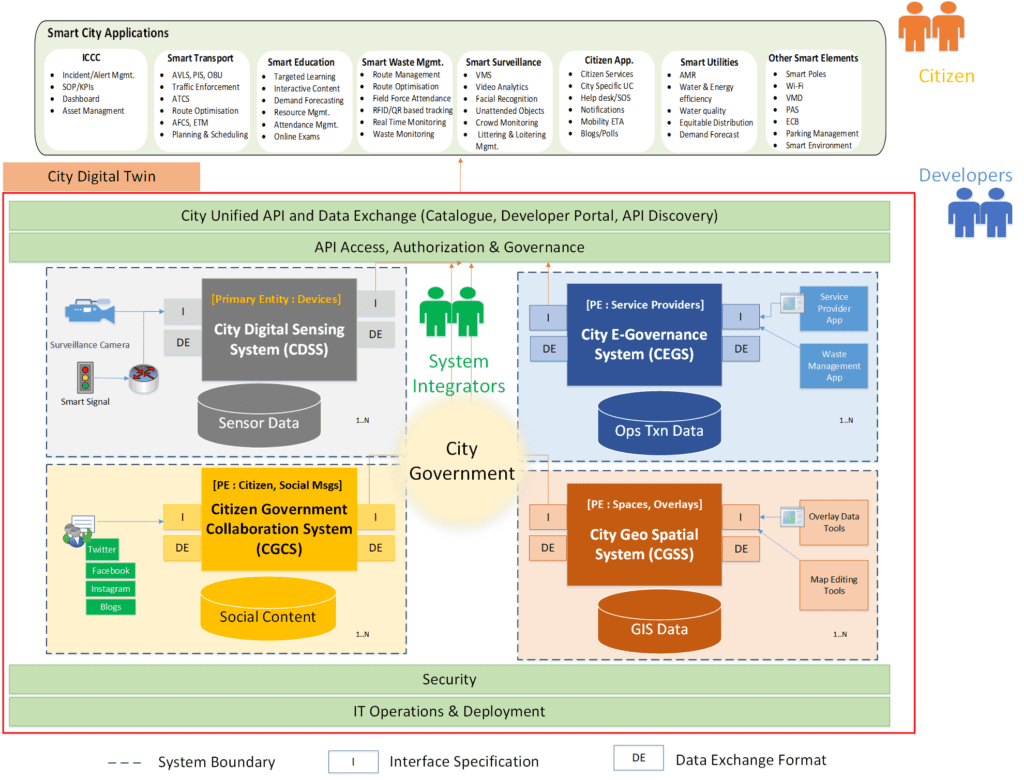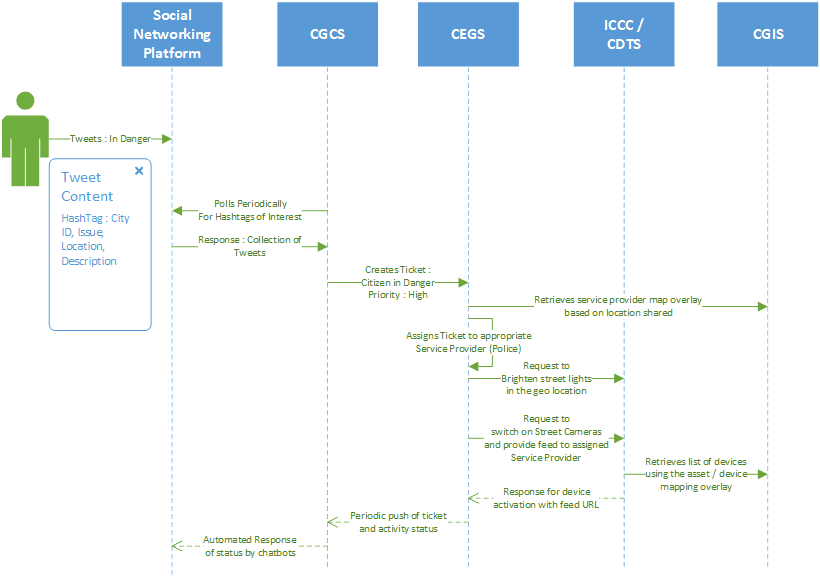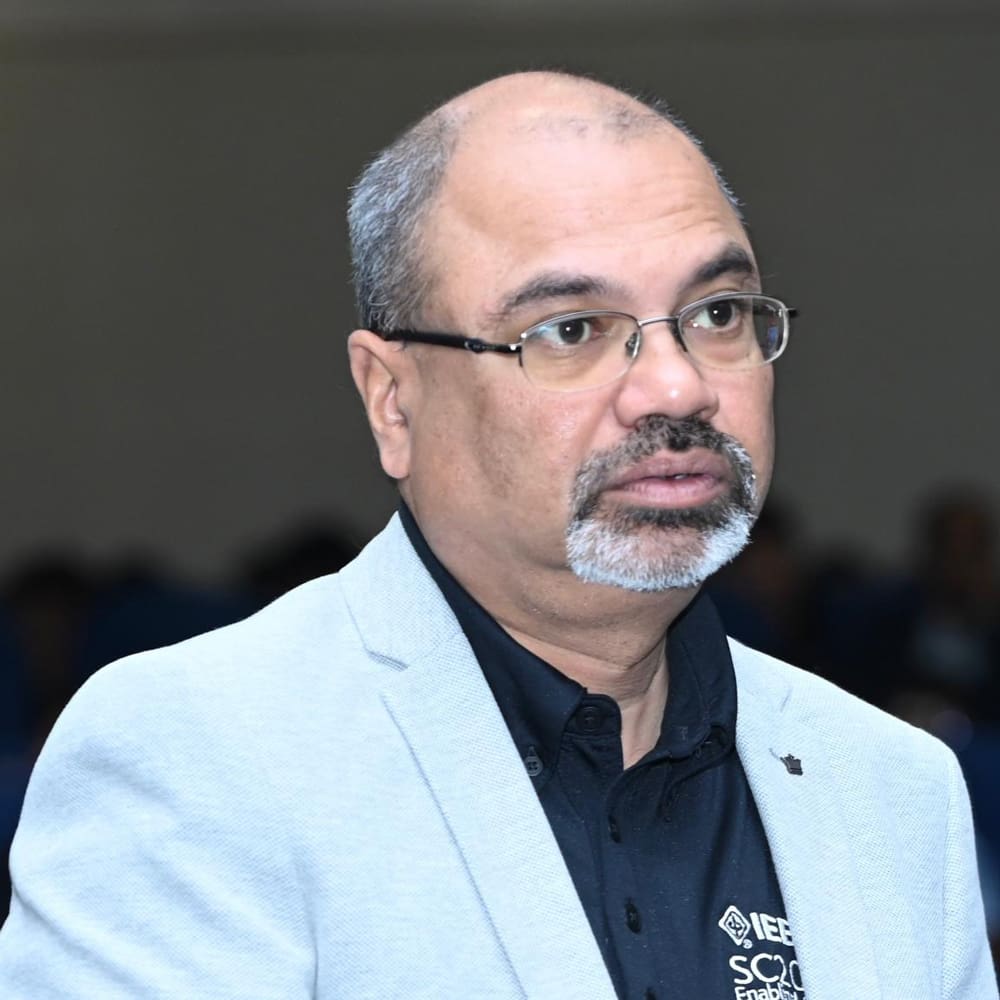Smart Cities in India
India is expected to witness an increase in urban population from 377 million in 2011 to 600 million in 2031 — roughly twice the current population of the United States, according to a UN-backed report published in 2014. Given the growth, the country is expected to have around 68 cities with a population of more than 1 million by 2030. To realize the goal of making a city smart, it is important to integrate physical, digital, and human systems effectively to deliver prosperous, sustainable, and inclusive value to its citizens.
The vision of smart cities is to use digital technologies to provide integrated services to their citizens through the free flow of information, and to usher in an era of good governance. Designing smart city Information Communication Technology (ICT) architecture is the essential first step in this direction. Cities are complex ecosystems, where government services pertaining to transportation, public safety, utilities, healthcare, education, social services, culture, economic development, and more are provided by a multitude of government organizations.
What makes smart cities possible:
- Ubiquitous internet/connectivity
- Advancement in sensor technology & reduction in the cost of sensors
- Advancement in low power communication technologies
- Availability of cloud-scale deployment and management frameworks/tools
What is Smart City ICT Infrastructure?
Core systems that make up the smart city ICT layer are:
- City Digital Twin system
- E-Governance system
- Geo-Spatial system
- Citizen Government Collaboration system
Domain-specific smart city applications are built over this core ICT digital infrastructure layer. Cloud-scale deployment and cloud-native technologies are the key technology enablers for building and managing the smart city ICT layer.

Physical infrastructures in smart cities are being equipped with appropriate sensors to collect data and create a digital infrastructure layer over the physical infrastructure. Real-time measurements generated by these sensors can be used to improve the operational efficiency of various systems or subsystems deployed in the cities, such as smart surveillance cameras can analyze traffic and actuate smart signals to adapt to traffic conditions, and lowering congestion and air pollution. Miniaturization, reduction in cost of sensors, low power communication technologies are the key technology enablers driving sensorization of smart cities.
Data is the key asset in smart cities, and it is important to enable data sharing between multiple systems. Frictionless movement of data between multiple physical, digital, and human systems is the holy grail as it generates value. There are four key steps in data management in each smart city system – ingestion/acquisition, processing, storage, and exchange.
The Bureau of Indian Standards (BIS) is working on developing a comprehensive set of standards to define the ICT infrastructure and address the interoperability issues in data acquisition, data processing, and data exchange.
Apart from BIS standards, to solve the data exchange problem between systems in a smart city, India’s Smart City Mission within the Ministry of Housing and Urban Affairs launched the Indian Urban Data Exchange (IUDX) program – a multidisciplinary program lead by the Indian Institute of Science (IISc), Bangalore, to solve technical and non-technical issues related to the use of data to create public good.
Role of Standards in Smart Cities
One of the key problems in smart cities is that cities are managed by a multitude of service providers and government organizations. Component systems are acquired by separate program offices and run by separate operation units. These organizations are not even connected by common membership or any structure. Component systems of the smart city ecosystem are independently managed and evolve on their own.
For example, the digital evolution features of a surveillance system deployed by city police, ambulatory services system deployed by hospitals, and e-governance systems deployed by municipalities are independent and based on business process changes in the managing organization. The city command center has no role to play in the evolution of the individual systems managed by these organizations.
Let us look at an example scenario of citizen safety and see how multiple physical, digital, and human systems need to come together.
Citizens utilize social networking platforms to reach out for help or assistance. A proactive citizen safety solution would require integration of different component systems and automation of workflows between these systems. In the example scenario, a citizen tweets that he/she is in danger via public social networking platforms using key hashtags. Collaboration systems orchestrate this information by creating tickets to be resolved in appropriate e-governance systems. Systems controlling the digital infrastructure employ digital twin systems and utilize a geospatial system for identifying the appropriate assets to control and to notify service providers about the tickets.

It is apparent that though city command centers do not play a role in the evolution of component systems. They do specify common operational goals and constraints for all the component systems which are part of the smart city ecosystem. These operational goals and constraints differ during various time periods based on the needs of the city.
Component systems should have the ability to negotiate autonomously to meet the operational goal within the specified constraints. There is a need to discover component systems deployed in a city, identify the entities managed by component systems in a standard way, and communicate the goal and constraint across component systems in a standard data exchange format by invoking a standard set of interfaces.
List of IEEE Standards for Smart Cities
The IEEE SA Foundational Technologies Practice is committed to smart cities standardization and offers a portfolio of standards and programs to address key aspects of the smart cities’ framework:
- IEEE P1951.1 Standard for Smart City Component Systems Discovery and Semantic Exchange of Objectives – This project is focused on solving the discovery of the systems deployed in a smart city and enabling the sharing of objectives between these smart city systems to make them work towards a common goal.
- IEEE P1950.1 Standard for Communications Architectural Functional Framework for Smart Cities – This standard specifies the architectural and functional framework for smart cities aiming to enable communications within and across smart city ecosystems.
- IEEE P2413.1 Standard for a Reference Architecture for Smart City (RASC)IEEE P2850 Standard for an Architectural Framework for Intelligent Cities Operation System – This standard defines an architecture framework for a computational operation system, which is designed to enable intelligent cities.
- IEEE P2784 Guide for the Technology and Process Framework for Planning a Smart City – This guide provides a framework that outlines technologies and the processes for planning the evolution of a smart city.
- IEEE P2872 Standard for Interoperable and Secure Wireless Local Area Network (WLAN) Infrastructure and Architecture – This standard describes a protocol that enables interoperable, semantically compatible connections between connected hardware (e.g. autonomous drones, sensors, smart devices, robots) and software (e.g. services, platforms, applications, AIS).
- IEEE SA Industry Connection Program on AI-Driven Innovation for Cities and People – This program is focused on providing cities a governance mechanism to support responsible artificial intelligence systems (AIS).
- IEEE SA Industry Connection Program on Alliance for Best Practices and Standards in Smart Cities – This program aims to develop close collaboration between the technology industry and city leaders and stakeholders towards smart city solutions across cities and regions.
IEEE SA encourages and welcomes participation in standards development and related activities.
View a Full List of IEEE Standards and Projects for Smart Cities









